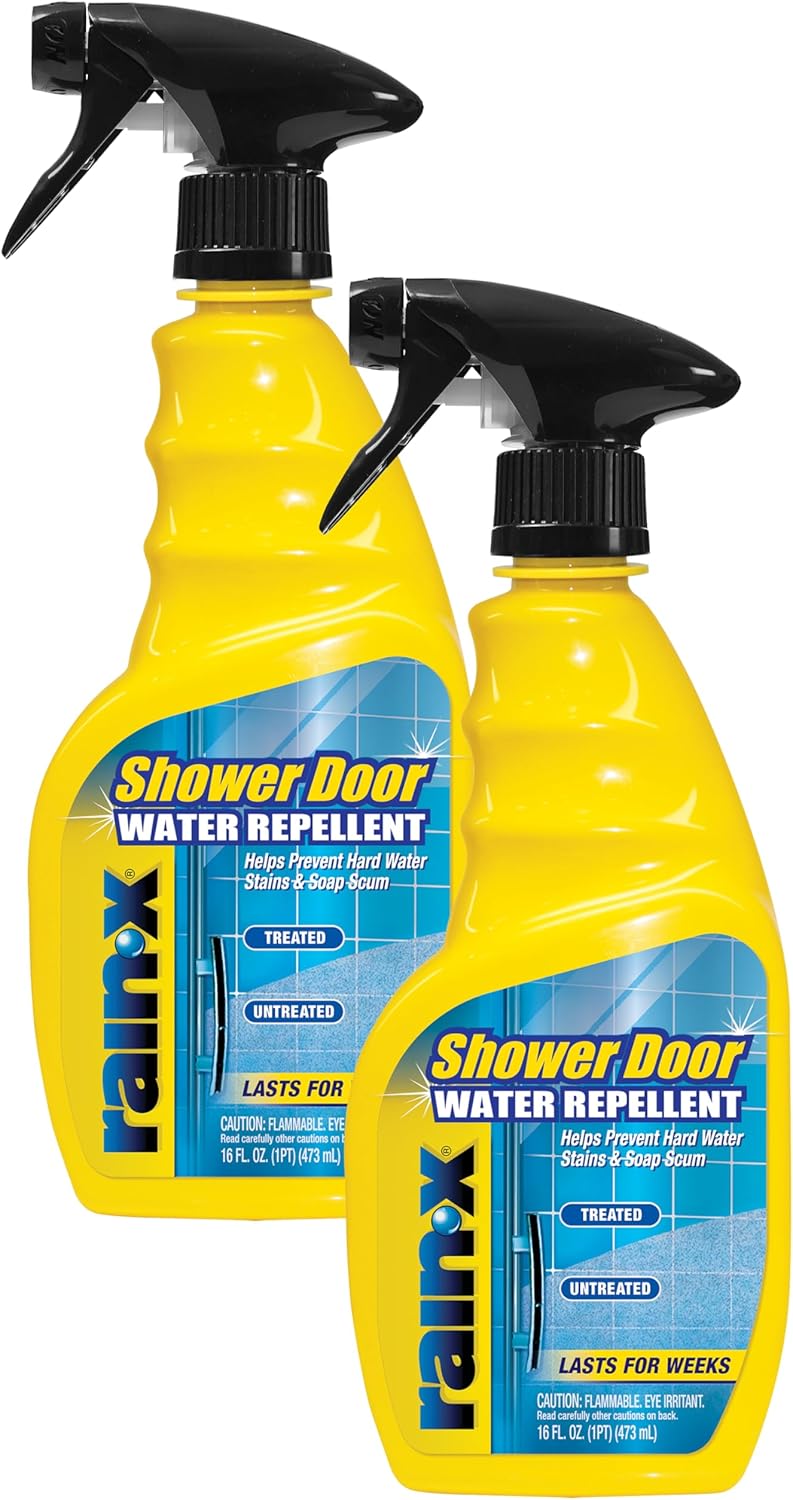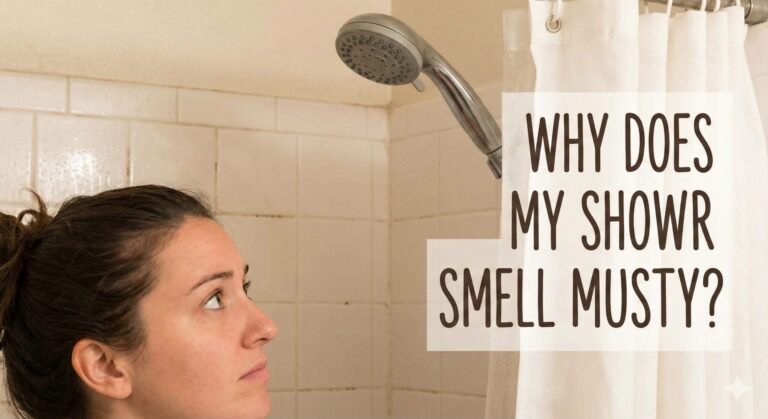How to Remove Hard Water Stains in Shower: The Ultimate Restoration Guide
There is nothing quite as disheartening as stepping into a freshly cleaned bathroom, only to see the glass doors and chrome fixtures still looking cloudy, spotted, and dull. You scrubbed, you rinsed, but those stubborn white spots remain. This isn’t dirt; it’s chemistry. You are battling hard water stains (limescale), and standard soap won’t fix it.
Hard water buildup doesn’t just look bad; it can actually damage your fixtures. It is the leading cause of low shower head pressure (clogging the nozzles) and can eventually ruin the seals on your glass shower doors. In this comprehensive guide, we will break down exactly how to dissolve these mineral deposits using both pantry staples and professional-grade tools.
🧪 The Science: What are Hard Water Stains?
Hard water contains high levels of dissolved minerals, specifically calcium and magnesium. When the water evaporates, it leaves these minerals behind as a rock-hard residue known as limescale.
Because these minerals are alkaline (high pH), you need an acid (low pH) to dissolve them. This is why bleach (which is basic/alkaline) does absolutely nothing to remove hard water stains—in fact, it can make them harder to see temporarily but won’t remove them. You need to fight chemistry with chemistry.
⚠️
Safety Warning: Never mix cleaning products. Specifically,
never mix vinegar (acid) with bleach. This creates chlorine gas, which is toxic and potentially deadly. Always work in a ventilated area, especially if you are cleaning a small enclosed space like a
camping shower tent or small bathroom.
Phase 1: The Natural DIY Solutions
Before you buy harsh chemicals, check your kitchen. For light to medium buildup, these methods are highly effective, eco-friendly, and cheap.
1. The Vinegar Soak
Required: White Distilled Vinegar, Water, Spray Bottle, Dish Soap.
Best for: Glass doors and large tile areas.
- Mix 50% vinegar and 50% water in a spray bottle.
- Add a teaspoon of dish soap (this helps the mixture stick to vertical surfaces).
- Spray liberally and let sit for 15 minutes. Do not let it dry.
- Scrub with a non-abrasive sponge and rinse.
2. The Baking Soda Paste
Required: Baking Soda, Vinegar, Old Toothbrush.
Best for: Grout lines and chrome fixtures.
- Make a thick paste with baking soda and a splash of water.
- Apply to the stain.
- Spray vinegar over the paste (it will fizz—this reaction helps lift dirt).
- Scrub with a toothbrush. Perfect for fixing leaking shower heads caused by mineral buildup on the faceplate.
Visual Guide: Seeing the Process
Sometimes you need to see the scrubbing action to believe it. This video demonstrates an effective cleaning method for tough glass stains:
Phase 2: The Heavy Hitters (Professional Solutions)
If the vinegar didn’t work, your stains have likely etched into the surface. It’s time to bring in the specialized tools. These are the products professionals use to restore luxury shower systems.
1. Bio-Clean Hard Water Stain Remover
The “Nuclear” Option. Unlike liquid sprays, this is an abrasive cream. It physically polishes the minerals off the glass without scratching. It is widely considered the gold standard for restoration.
Check Price on Amazon
2. Drill Brush Attachment Set
Save Your Elbow Grease. Why scrub by hand? These brushes attach to your cordless drill. Use the nylon bristles for tile and grout. Ideal if you are cleaning a large walk-in shower.
Check Price on Amazon
3. Rain-X Shower Door Water Repellent
The Prevention Hero. Once you get the glass clean, keep it clean. This creates a hydrophobic coating that makes water bead up and roll off, preventing new stains from forming.
Check Price on Amazon
Cleaning by Surface Type
Not all surfaces are created equal. Using the wrong acid on natural stone can ruin it permanently.
Glass Doors
Glass is resilient. You can use Bio-Clean, vinegar, or even a razor blade (carefully!) to scrape off thick deposits. If you are tired of cleaning glass, consider switching to shower curtains which can be thrown in the washing machine.
Natural Stone (Marble/Travertine)
STOP! Do NOT use vinegar or lemon juice on marble. The acid will “etch” the stone, leaving a permanent dull spot. Use a pH-neutral cleaner specifically designed for stone. If you have a steam shower lined with stone, be extra careful as the heat opens the pores of the stone.
Acrylic and Fiberglass
Common in tub inserts. Do not use abrasive scrubbing pads (green Scotch-Brite) as they will scratch the plastic, creating grooves where dirt will hide. Use a soft microfiber cloth and the baking soda paste. This is also applicable if you use a plastic shower chair—clean it gently.
Phase 3: Prevention (Stop the Scrubbing)
The best way to clean hard water stains is to never let them form. Here is your daily maintenance routine:
- Squeegee Daily: This is non-negotiable. After every shower, use the best shower squeegee you can find to remove water droplets from the glass.
- Ventilation: Run the exhaust fan to reduce humidity. This also helps prevent mold, reducing the need for mold cleaners later.
- Water Softener: The ultimate solution. Installing a whole-home water softener removes the minerals at the source.
💡
Lifestyle Tip: Incorporate cleaning into your routine. Whether you are wondering
if you should shave before or after a shower, take 30 seconds
after you are done to rinse the walls and squeegee the glass. Future-you will thank you.
Frequently Asked Questions
Can I use a dryer sheet to clean shower doors?
Surprisingly, yes! Wet a used dryer sheet and scrub the glass. The anti-static ingredients help soften the minerals and lift soap scum. It works well for light maintenance.
Why does my shower head keep clogging?
Hard water builds up inside the tiny nozzles. You can unscrew the head and soak it in vinegar. If it’s too far gone, check our guide on how to install a new rainfall shower head for a fresh start.
Is WD-40 good for shower glass?
It can remove stains, but we don’t recommend it. It leaves an oily residue that attracts dirt and, more importantly, makes the shower floor incredibly slippery and dangerous.
How often should I deep clean my shower?
If you squeegee daily, you only need to deep clean once a month. If you are hosting an event, like a bridal shower, do it a few days in advance so the vinegar smell has time to dissipate.
Conclusion
Removing hard water stains is a battle of persistence and chemistry. By understanding that you need an acid to dissolve the alkaline minerals, you can restore your bathroom’s sparkle. Start with vinegar, graduate to Bio-Clean if needed, and commit to the daily squeegee routine.
A clean shower not only looks better but functions better, preventing issues like clogged drains and leaking faucets caused by mineral corrosion. Now, go enjoy your crystal-clear view!
Disclaimer: As an Amazon Associate, ShowerBlog earns from qualifying purchases. Always test cleaning products on a small inconspicuous area first.







